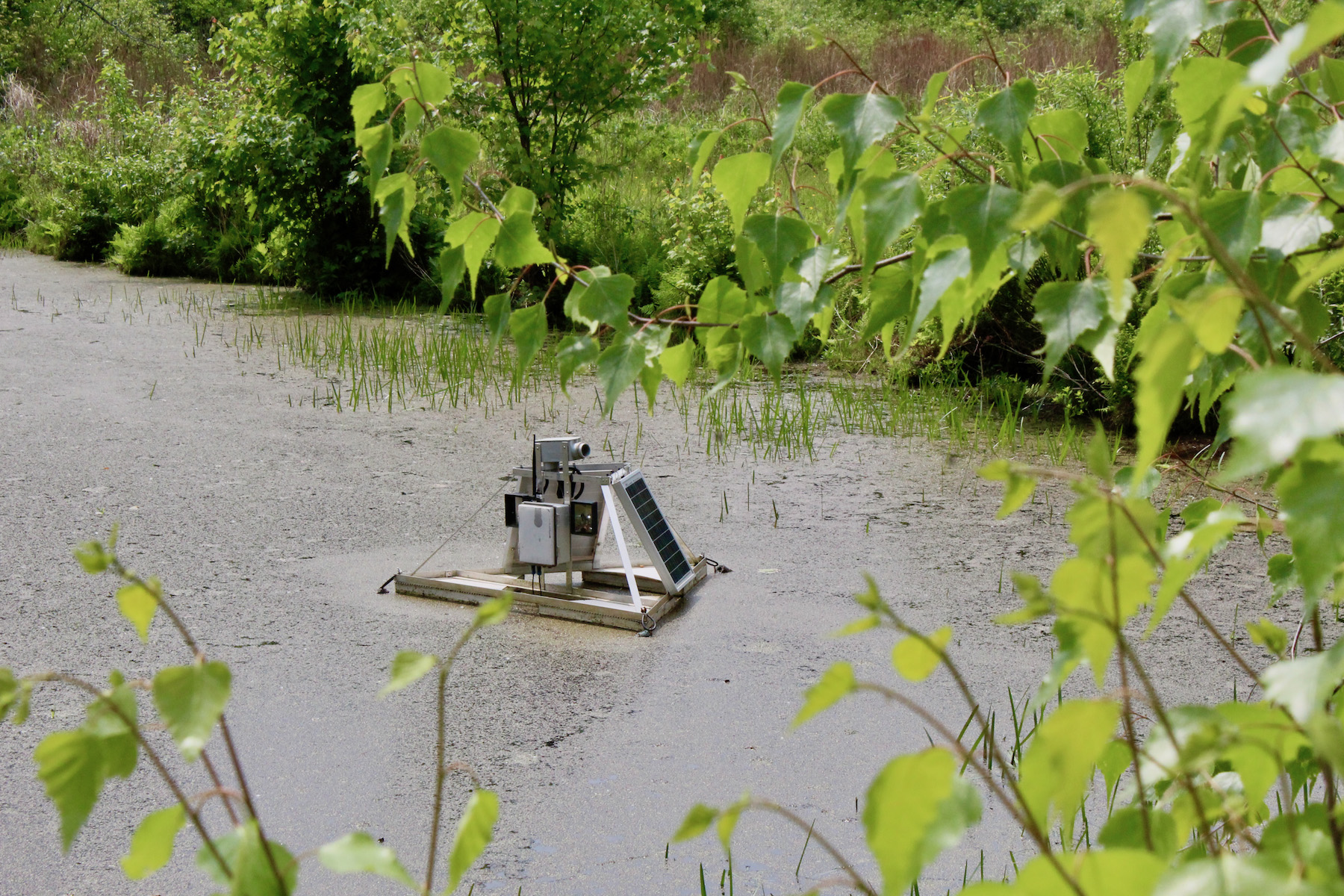TRANSMISSION ART ARCHIVE


Pond Station
Listen Live: (allow a few seconds for audio to start)
Or, listen to this sample recording:
Zach Poff’s Pond Station transmits the hidden activity within a Wave Farm pond from dawn until sundown. As the sun warms the water each day, hydrophones (underwater microphones) reveal a slow crescendo of sound: aquatic insects “sing” to mark their territory while gas bubbles rise from the pond bottom, punctuated by unidentifiable grunts and squeaks. This poly-rhythmic chorus mixes with traces of bird-song and passing cars that filter down from above. Rain on the pond surface creates a dense cloud of high-frequency detail, like the coals in a cooling campfire.
In the winter, life in the pond slows down to near silence as the water ices over, but the ice may crackle and hiss during its daily expansion and contraction.
The sound transmitted is broadcast to local listeners on Wave Farm Radio 1620-AM and Wave Farm’s WGXC 90.7-FM, and streamed online to international audiences. In addition, Pond Station serves as a live, generative, natural instrument for Wave Farm visiting artists who may remix and interpret these otherwise inaccessible environmental sounds in their own work.
Pond Station’s physical form is inspired by the utilitarian beauty of remote research stations and space probes. Its exterior is designed to withstand high winds and rain while keeping its electronics dry and its antenna focused on the receiver. The project began in 2013 as Pond FM (with N.B.Aldrich), an installation that transmitted the underwater sounds of the pond over short-range FM radio. Pond Station is based on the same custom hydrophones but the rest of the system has been replaced with a more rugged and upgradable platform. The audio is transmitted over a low-power digital radio link using custom-built antennas to cover the 350ft distance between the pond and the receiver. An Arduino microcontroller manages the transmission schedule and power distribution to keep the station on the air regardless of weather. A telemetry radio transmits updates about the internal electronics and local environmental data, which are archived for future analysis. (The environmental data also helps contextualize the sounds since sunlight is the primary driver of the pond’s ecosystem.) The web stream is powered by a Raspberry Pi and the Locus Sonus streaming server and sound map.
In 2016 Pond Station was upgraded to include light-based sensors which reveal some of the insect “night life” of the pond and provide opportunities for light-based interaction with performers.
More information about Pond Station is available at zachpoff.com/projects.




